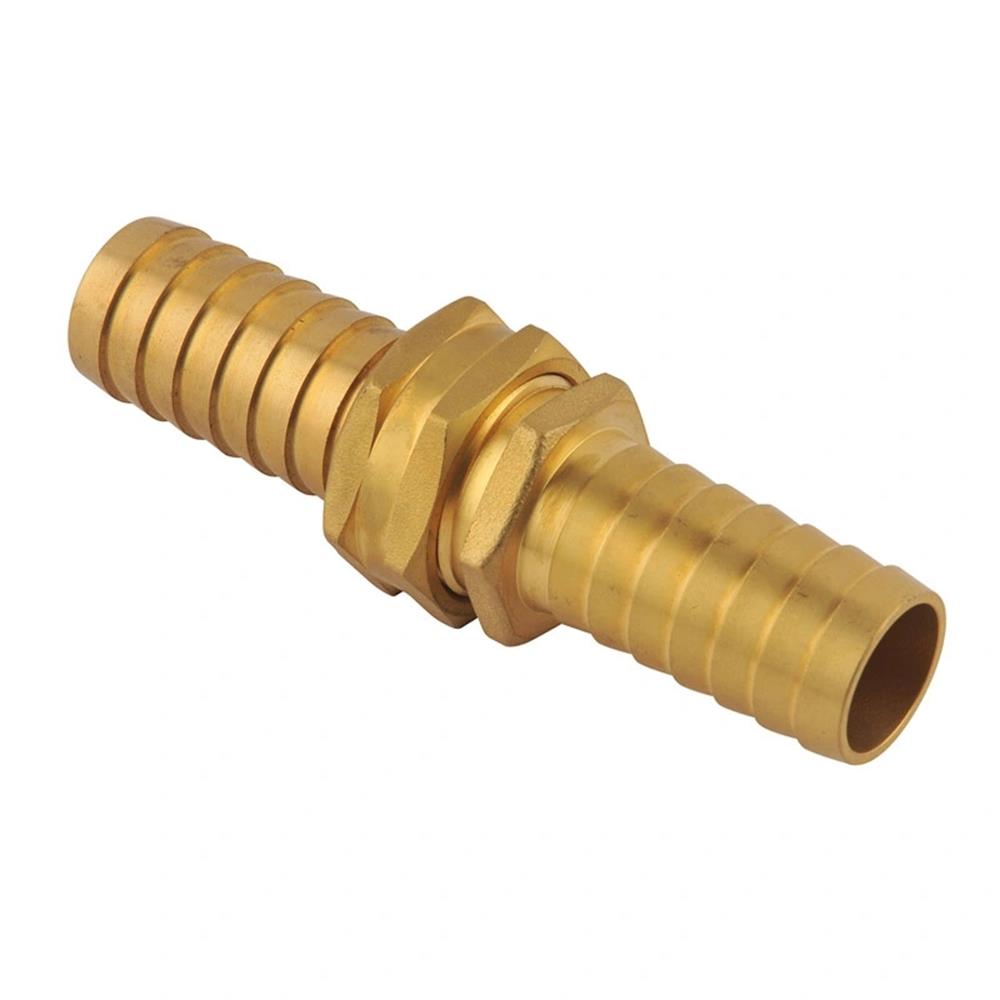Garden hose couplers are the connectors that link your garden hose to various devices like faucets, sprinklers, and nozzles. They ensure a secure, leak-free connection between the hose and the water source, allowing you to use water efficiently without wastage. Without these couplings, even the best garden hoses would be ineffective—leading to water leaks, pressure loss, or even more serious issues like burst hoses.
Understanding Garden Hose Couplings
What Are Garden Hose Couplings?
At their core, garden hose couplings are connectors designed to link your garden hose to various water sources and attachments, such as faucets, sprinklers, nozzles, and pressure washers. These couplings enable a secure, leak-proof connection that allows water to flow through your hose and reach its intended destination.
Garden hose couplings consist of two main parts: a male connector, which has external threads, and a female connector, which has internal threads. The two parts screw together to form a tight, watertight seal. This connection is essential for keeping water from leaking out while ensuring a steady, consistent flow.
Made from materials like brass, plastic, or stainless steel, couplings can vary in size and functionality depending on their intended use. Whether you’re dealing with a basic garden hose setup or a complex irrigation system, understanding garden hose couplings is key to maximizing your hose’s performance and preventing common issues like leaks or low water pressure.

The Different Types of Garden Hose Couplings
Garden hose couplings come in various shapes, sizes, and materials to suit different needs. Below are the most common types of couplings you might encounter:
Standard Male and Female Couplings: These are the most common type, used to connect hoses to faucets or sprinklers. They typically come in brass, plastic, or aluminum and feature simple threads that screw into each other.
Quick Connect Couplings: These couplings allow for fast, tool-free connections. They feature a push-button or lever mechanism that makes it easy to connect or disconnect the hose from the faucet or attachment. They’re perfect for gardeners who want convenience and speed.
Barbed Couplings: Often used in hose repairs, barbed couplings feature small ridges or “barbs” that grip the inside of the hose, ensuring a tight, secure fit. These are especially useful for joining hoses or extending their length.
Swivel Couplings: These couplings can rotate 360 degrees, allowing for more flexibility and preventing kinks in the hose. They’re often used in setups where the hose needs to move or twist frequently.
Threaded Connectors: These couplings use male and female threads to screw the parts together. They come in both NPT (National Pipe Thread) and BSP (British Standard Pipe) thread types, which are used for different water systems.
Faucet Connectors: These are couplings specifically designed to attach to faucets or spigots. They usually feature a rubber washer that helps prevent leaks and ensures a tight connection.
Each type of coupling serves a unique purpose, so it’s essential to choose the right one based on your needs, whether you’re looking for durability, ease of use, or flexibility in your garden hose setup.
How Do Hose Couplings Work in a Watering System?
In a typical watering system, the garden hose acts as a conduit that delivers water from the faucet to your garden, lawn, or other areas. Hose couplings serve as the connectors that join the various parts of the system together, creating a continuous flow of water.
Here’s how they work:
Connection to the Faucet or Water Source: The female coupling typically attaches to the faucet or water supply, while the male coupling connects to the hose. The threads on both parts align to form a secure connection. This tight seal prevents water from leaking out when the faucet is turned on.
Water Flow: Once connected, water is allowed to flow through the hose. A well-installed coupling ensures that the water travels at a consistent pressure, allowing you to water your garden or use your hose for cleaning tasks effectively.
Attachment to Watering Tools: Many couplings are designed to easily attach to various watering tools like nozzles, sprinklers, or pressure washers. These attachments help control the water flow and spray pattern, making them an essential part of any efficient watering system.
Leak Prevention: A properly functioning coupling helps prevent leaks, which could waste water or reduce the pressure needed for effective watering. Many couplings are designed with rubber washers, O-rings, or other sealing mechanisms that create a tight barrier against water escaping at the connection points.
Flexibility and Ease of Use: Quick-connect couplings and swivel fittings make it easy to connect and disconnect attachments, reducing the time spent on setup and giving you more flexibility when moving your hose around your yard.
Key Components of Garden Hose Couplings
Exploring Common Garden Hose Connectors
Garden hose connectors are the parts of a coupling system that physically link the hose to the faucet, sprinkler, or any other watering device. These connectors are essential for creating a tight, leak-proof seal that ensures water flows smoothly through the hose. Here are the most common types of garden hose connectors you’ll encounter:
Male Connectors: These connectors have external threads and are typically found on the end of the hose that attaches to the faucet or a watering tool. They screw into the female connector or faucet to form a secure connection.
Female Connectors: The female connector is designed with internal threads that allow it to screw onto a male connector. This part is often found on the end of the hose or attached to an accessory, such as a nozzle or sprinkler.
Universal Connectors: These are designed to work with multiple types of hose fittings and faucet threads, making them ideal for gardeners who want flexibility. They often feature rubber washers inside to create a tighter seal and prevent leaks.
Quick Connectors: These connectors are designed for convenience and speed. With a simple push-and-click mechanism, you can easily attach or detach the hose from the water source or nozzle. They’re often used in systems where frequent connections are needed.
Each of these connectors plays a vital role in ensuring that your hose operates efficiently, delivering the right amount of water where it’s needed.
The Role of Threaded Connectors and How They Work
Threaded connectors are one of the most common and reliable types of garden hose couplings. They use male and female threads to create a secure connection between the hose and faucet, or between the hose and another attachment, such as a nozzle or sprinkler. Here’s how they work:
Male Threads: Male connectors are threaded on the outside. They are designed to fit into female connectors or the faucet. When attached to a female connector, the male thread screws into the internal thread of the female, forming a tight bond. This helps maintain water pressure and prevents leaks.
Female Threads: The female connector, on the other hand, has internal threads that match the male connector’s external threads. When the male coupling is screwed into the female connector, the threads interlock to form a secure, watertight seal.
Thread Types: There are two primary types of threaded connectors used in garden hose couplings:
NPT (National Pipe Thread): This is the standard thread type used in the U.S. for most garden hose connectors. It’s designed to provide a leak-proof seal when the male and female threads are tightly screwed together.
BSP (British StandardPipe): BSP threads are commonly used in countries outside the U.S., like the UK and Europe. They have a slightly different pitch and angle but serve the same purpose of creating a secure, leak-proof connection.
Threaded connectors are often preferred because of their durability and the firm, leak-resistant seal they provide. However, they require more effort to attach and detach compared to quick-connect couplings. Still, for long-term reliability, threaded connectors are an excellent choice.

Understanding Hose Barbs: What They Are and How They Help
Hose barbs are a type of connector commonly used in garden hose repairs and extensions. They are designed with small, ridged barbs that grip the inside of a hose to create a secure, friction-based connection. Here’s why hose barbs are essential in many hose coupling applications:
Structure of Hose Barbs: Hose barbs are cylindrical connectors with multiple small ridges or barbs along their surface. These barbs are designed to fit snugly into the inside of the hose, holding it firmly in place.
How They Help: When you slide the hose over a barb and secure it with a clamp or other fastening system, the barbs create a mechanical grip on the hose, preventing it from slipping off under pressure. This friction-based connection is ideal for ensuring that water doesn’t leak where the hose meets the coupling.
Common Uses: Hose barbs are typically used in situations where you need to connect a hose to a water source or attach two hoses together. They are often found in hose repair kits or when making custom garden hose extensions.
Advantages: Hose barbs are reliable and relatively easy to use. They are ideal for permanent or semi-permanent connections, as they provide a secure fit that won’t easily loosen, even under higher water pressure. Many barbed couplings also have grooves that help secure the hose with a hose clamp, ensuring a tighter fit and preventing leaks.
Types of Garden Hose Couplings
Male vs. Female Hose Couplings: What’s the Difference?
One of the most fundamental distinctions in garden hose couplings is the difference between male and female connectors. While these terms might seem simple, understanding their role in the hose system is crucial for selecting the right parts for your setup.
Male Hose Couplings: Male couplings have external threads, meaning they are designed to fit into a female coupling or faucet. These connectors are commonly found at the end of the hose that attaches to the water source. The male coupling’s threaded design allows it to screw into female parts, creating a secure, leak-resistant seal.
Female Hose Couplings: Female connectors, on the other hand, feature internal threads. They are typically located on the end of a hose that connects to the nozzle, sprayer, or other watering tools. The female connector receives the male connector, forming a firm connection when screwed in.
The primary difference between these two types is simply their threading: male couplings screw into female couplings. It’s essential to match the correct male and female components to ensure a leak-free, secure connection. In some cases, you might need to switch between male and female couplings depending on the attachments you’re using, so it’s helpful to keep both types on hand.
Quick Connect vs. Standard Couplings: Which is Right for You?
When it comes to ease of use and convenience, garden hose systems offer two popular coupling options: quick connect and standard couplings. While both serve the same basic function, each comes with its own set of benefits and drawbacks.
Quick Connect Couplings: As the name suggests, quick connect couplings allow you to easily connect and disconnect your hose from the faucet, nozzle, or other attachments. These couplings often feature a push-button or lever mechanism that lets you attach or detach the hose without having to twist or screw in the connectors.
Pros: Quick connect couplings are incredibly convenient for those who need to frequently change hoses or attachments. They’re perfect for gardeners who want to quickly switch between watering tasks or for people who want to avoid hand strain when connecting and disconnecting hoses.
Cons: While quick connect couplings are easy to use, they can be more prone to wear and tear over time, especially if not maintained properly. They also tend to cost more than standard couplings.
Standard Couplings: Standard hose couplings are the traditional type, using male and female threaded connectors to screw the hose in place. These couplings form a tight, reliable seal, making them ideal for long-term, heavy-duty use.
Pros: Standard couplings are highly durable and can withstand higher pressure and prolonged use. They also tend to be less expensive than quick connect couplings and are less likely to wear out quickly.
Cons: The downside of standard couplings is the time it takes to screw the parts together and the physical effort involved. For people with limited hand strength or those who need to connect and disconnect their hose frequently, this could become inconvenient.
Understanding Garden Hose Nozzles and Their Connection to Couplings
While hose couplings are primarily designed to connect the hose to the faucet or other watering devices, garden hose nozzles play an equally important role in controlling the flow and direction of water. Understanding how nozzles connect to couplings is crucial for optimizing your watering system.
What is a Garden Hose Nozzle? A garden hose nozzle is an attachment that connects to the end of the hose, allowing you to control the water pressure, spray pattern, and flow. Nozzles come in a variety of styles, from basic on/off valves to adjustable nozzles with different spray settings (e.g., shower, jet, mist, etc.).
How Nozzles Connect to Hose Couplings Most garden hose nozzles have a female coupling at the end that screws onto the male coupling of the hose. The threading on the nozzle matches that of the hose coupling, creating a secure, watertight seal. Some nozzles may also feature quick-connect fittings for easier attachment and detachment.
Thread Compatibility Just like the faucet and hose coupling connections, the threads on the nozzle must be compatible with the hose coupling. The most common thread standards for garden hoses are NPT (National Pipe Thread) and BSP (British Standard Pipe), and it’s important to match these thread types to ensure a proper connection.
Nozzle Types
Basic Nozzles: These are simple on/off valves that control the water flow without adjusting the spray pattern.
Adjustable Nozzles: These nozzles allow you to customize the spray pattern and water pressure, ideal for tasks like watering delicate plants or washing the car.
Specialty Nozzles: High-pressure nozzles are used for power washing, while misting nozzles are great for cooling or irrigation.
How to Install Garden Hose Couplings Like a Pro
Step-by-Step Guide to Installing Male and Female Couplings
Installing male and female couplings may seem straightforward, but following the right steps can ensure a secure and leak-free connection. Here’s a step-by-step guide to help you install your garden hose couplings like a pro:
Prepare the Hose Start by cutting the end of the garden hose evenly with a sharp utility knife or hose cutter. Make sure the cut is straight to allow the coupling to fit snugly onto the hose.
Install the Male Coupling
Step 1: Slide the female end of the male coupling onto the hose. If it’s a barbed coupling, make sure the hose is stretched slightly to fit over the barbs securely.
Step 2: For threaded couplings, make sure the threads of the coupling align with the hose threads. Twist the male coupling onto the hose and tighten it with your hands.
Step 3: If the coupling is a barbed type, use a hose clamp to secure the hose firmly in place over the barbs.
Install the Female Coupling
Step 1: Slide the female coupling onto the other end of the hose, ensuring a snug fit. If it’s a barbed coupling, repeat the same process as with the male coupling by sliding the hose onto the barbs and securing it with a hose clamp.
Step 2: If using threaded couplings, make sure the internal threads of the female coupling match the male end of your hose attachment or faucet.
Ensure the Washer is in Place For added sealing, insert a rubber washer into the female coupling. This washer helps prevent leaks by creating a watertight seal when the male and female connectors are screwed together. It’s especially important for threaded couplings.
Tighten the Connection If necessary, use a wrench or pliers to tighten the male and female couplings. But be cautious—tighten just enough to create a secure connection without over-tightening, which could damage the threads or cause the hose to burst.

Using Hose Clamps for a Secure Fit
Hose clamps are crucial for ensuring that your hose stays securely connected to the coupling, especially for barbed couplings. Here’s how to properly use them for a tight fit:
Slide the Hose Clamp into Position After sliding the hose onto the barbed coupling, place the hose clamp around the hose just above the barb (the ridged part of the coupling). Make sure the clamp is positioned evenly around the circumference of the hose.
Tighten the Clamp Using a flathead screwdriver or a wrench, tighten the hose clamp until it is secure. Be careful not to over-tighten, as this could cause the hose to crack or the coupling to deform.
Check for Leaks After installing the hose and tightening the clamp, turn on the water to check for any leaks around the hose and coupling. If you notice any leaks, tighten the clamp slightly more until the leak stops. If leaks persist, you may need to recheck the washer or replace it if it’s worn out.
Conclusion
By choosing the right male and female couplings, quick connects, or barbed couplings, you ensure that your watering system functions smoothly, efficiently, and without leaks. So, taking the time to select, install, and maintain your hose couplings will not only improve your watering efficiency but also extend the life of your hose and tools.
FAQ
What are garden hose couplings?
Garden hose couplings are connectors that link your hose to various watering devices like faucets, sprinklers, or nozzles. They create a secure, leak-proof connection that ensures smooth water flow.
How do I know which coupling to choose for my garden hose?
Choose couplings based on your hose’s size, thread type (NPT or BSP), and the materials used in the coupling. For durability and resistance to corrosion, brass or stainless steel are excellent choices. Consider quick-connect couplings if you need convenience.
Can I repair a damaged garden hose coupling?
Yes, damaged couplings can often be repaired or replaced. If the hose is still in good condition, you can replace just the coupling. For a secure fit, make sure to use a hose clamp or check for worn-out rubber washers.
Why does my garden hose keep leaking at the coupling?
Leaks at the coupling could be due to loose connections, worn-out washers, or misaligned threads. Try tightening the connection, replacing the washer, or ensuring the male and female threads are properly aligned.
How often should I replace my garden hose couplings?
If your couplings show signs of wear, rust, or cracks, it’s time to replace them. Regularly inspect them for damage, especially after heavy use or exposure to harsh weather conditions.
Can I use quick-connect couplings for high-pressure hoses?
Quick-connect couplings are convenient, but they may not be ideal for high-pressure hoses or heavy-duty tasks. If you’re using a high-pressure system, consider brass or stainless steel threaded couplings for a more secure and durable connection.







